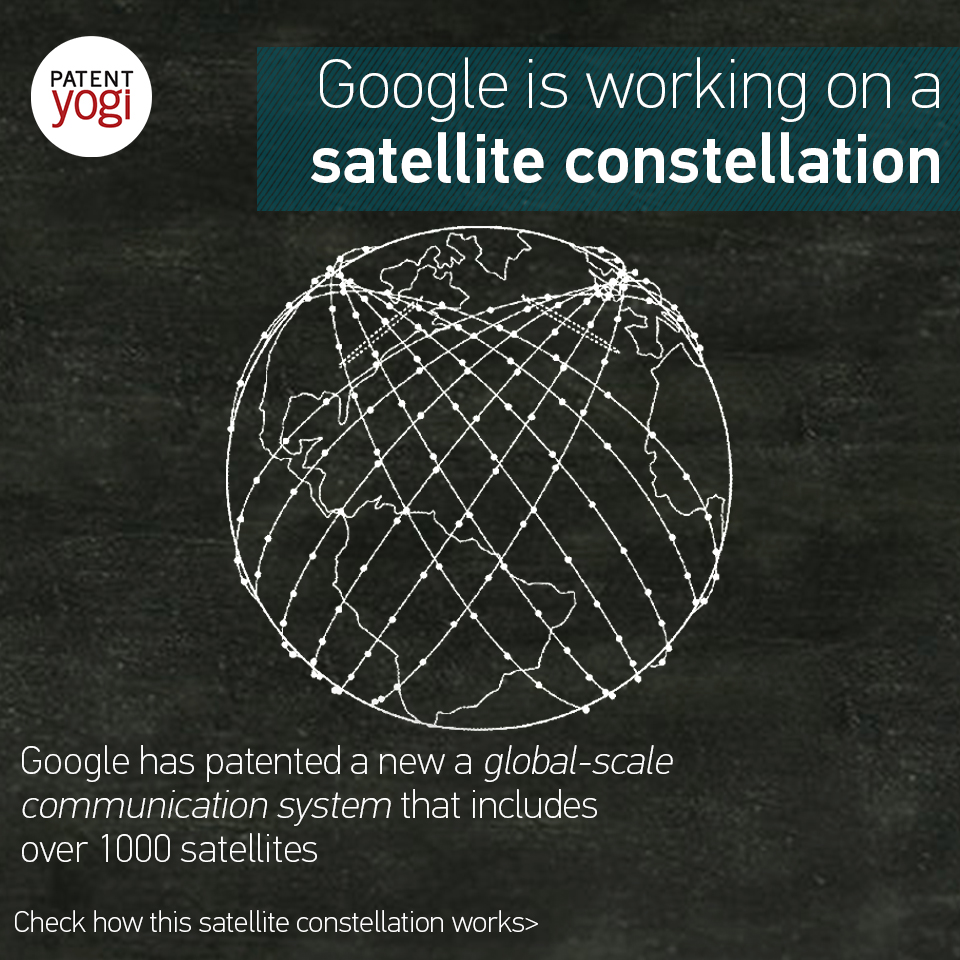Google is working on a new a global-scale communication system that includes a large number of satellites (over 1000 satellites) and ground stations. The communication system aims to increase the satellite signal coverage of the populated world, reduce satellite collision between satellites as they orbit the earth, and provide overlapping coverage to maintain satellite coverage of a portion of the earth when one of the satellites covering the same portion is experiencing a malfunction.
PatentYogi’s expert patent search team discovered a recent patent application from Google that discloses details of this global-scale communication system The patent application is embedded in the post below.
According to the patent application, a first group of satellites is launched at a higher altitude, which allows the global-scale communication system to have fewer satellites at the higher altitude since the higher a satellite is, the larger coverage area the satellite covers. Thereafter, a second group of satellites is launched that includes a larger number of satellites, providing a bigger system bandwidth and supporting an increase number of users using the global scale communication system. The first group of satellites and the second group of satellites are arranged to provide at least 75% coverage of the earth at any given time.

Multiple satellites in the first group and the second group work in concert form a satellite constellation. The satellites within the satellite constellation are coordinated to operate together and overlap in ground coverage to avoid communication downtime when a satellite is experiencing problems (e.g., mechanical, electrical, or communication). The satellite constellation includes satellites having enough inter-satellite links to make the constellation fully-connected, where each satellite is equipped with communication equipment and additional antennas to track the location of other satellites in the same plane or in other adjacent planes in order to communicate with the other satellites.
The ubiquitous double coverage of the earth caused by the satellites of the first group and the satellites of the second group allows for outages of satellites (individual spacecraft failures), power-sharing throughout the constellation of satellites, and multiple LOS opportunities for every ground-space link, offering an ability to de-conflict from “keep away” lines of sight (e.g., to Geosynchronous Satellites). The double coverage of satellites also allows maximum utilization of the individual spacecraft’s’ footprints, with enhanced (more) overlap over populous areas, synchrony throughout the constellation, for predictable and safe conjunction miss distances at the orbit intersections, and low spacecraft count without recourse to polar inclinations that unnecessarily provide coverage of unpopulated arctic regions.
The satellites have a trajectory with an inclination angle of less than 90 degrees and greater than zero degrees with respect to the equator of the earth. The satellites have a hexagonal coverage footprint of the earth, which allows for the fewest number of satellites.
The satellite constellation may serve different purposes, such as military or civilian observation satellites, communication satellites, navigations satellites, weather satellites, and research satellites.
Google has been working on multiple projects to provide Internet connectivity across the world. This includes Google Loon project.
Publication number: US 20170005719
Patent Title: Satellite Constellation
Publication date: 5 Jan 2017
Filing date: 16 Sep 2016
Inventors: Mark Krebs;
Original Assignee: Google Inc.

